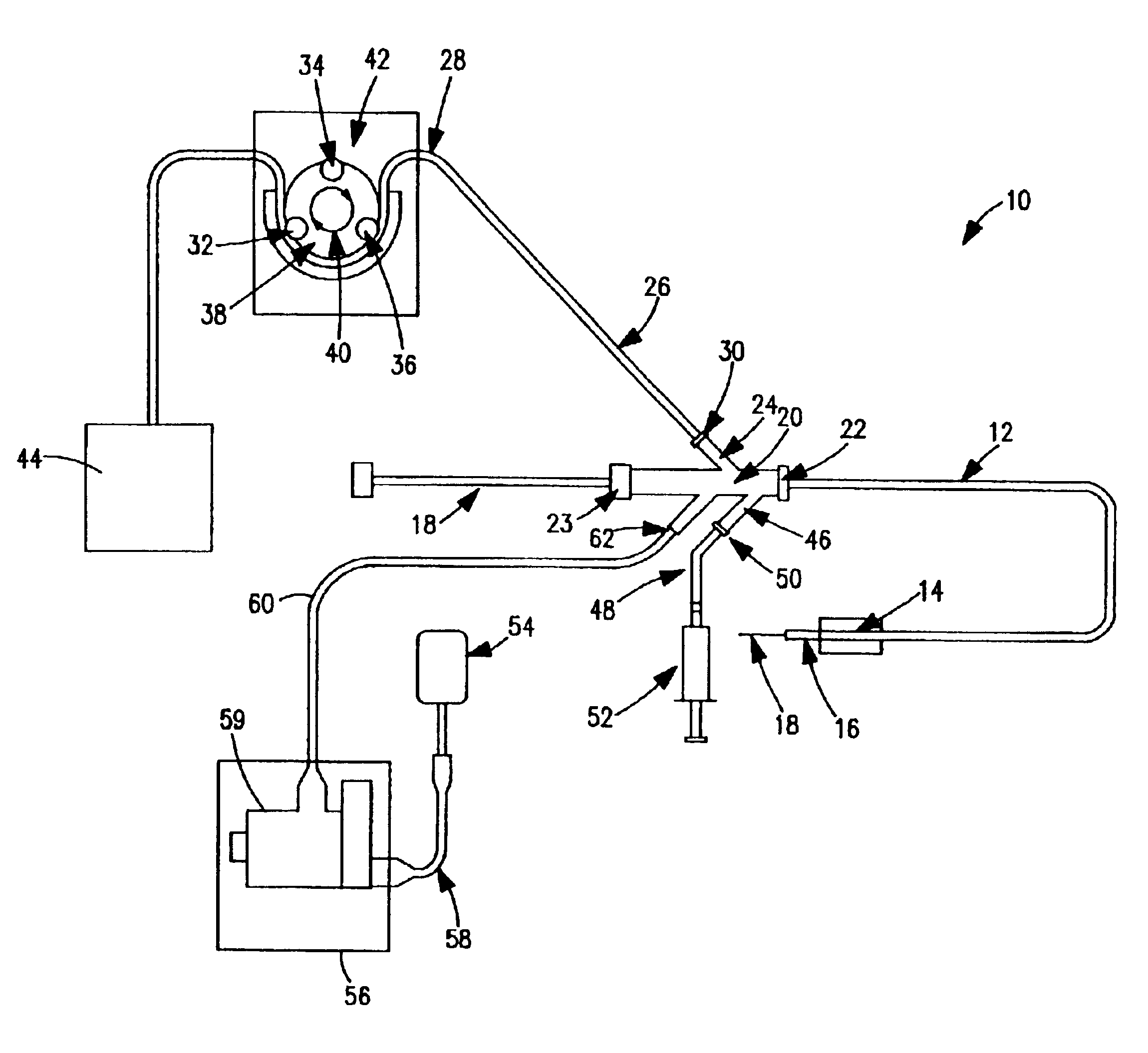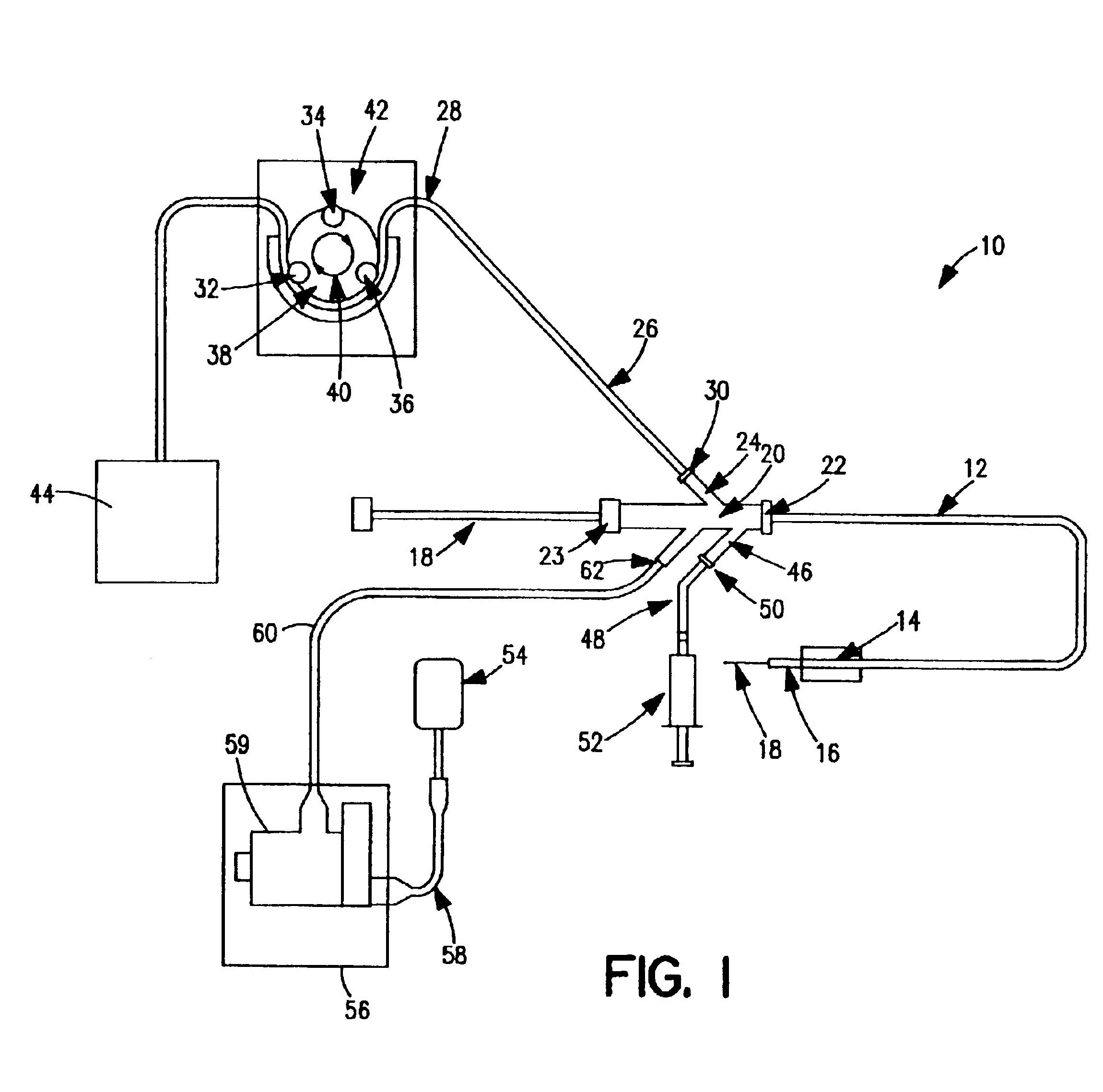Thrombectomy and tissue removal method
a thrombosis and tissue technology, applied in the field of medical devices and procedures, to achieve the effect of effective breaking up the thrombosis or tissue deposit, low localized pressure, and high velocity
- Summary
- Abstract
- Description
- Claims
- Application Information
AI Technical Summary
Benefits of technology
Problems solved by technology
Method used
Image
Examples
Embodiment Construction
[0039]FIG. 1 is a schematic view of one embodiment of a thrombectomy and tissue removal device 10 according to the present invention. The details supplied herein should be taken as representative and not limiting of the many embodiments which may be efficaciously employed within the scope of the present invention.
[0040]Thrombectomy and tissue removal device 10 has a two-passage tubular member such as a standard two-lumen catheter 12, which is extruded of a flexible material such as polyolefin, PTFE, PVC, polyurethane, nylon, or other suitable material in the normal fashion. Near the distal end 16 of catheter 12 can be located inflatable balloon 14, which is preferably an elastic balloon having no predefined outside diameter size limitation upon inflation. In this manner, balloon 14 can conform to the exact dimensions of the vessel to hold distal end 16 of catheter 12 in a fixed position. Alternatively, inflatable balloon 14 can be an inelastic balloon with a predefined shape and siz...
PUM
 Login to View More
Login to View More Abstract
Description
Claims
Application Information
 Login to View More
Login to View More - R&D
- Intellectual Property
- Life Sciences
- Materials
- Tech Scout
- Unparalleled Data Quality
- Higher Quality Content
- 60% Fewer Hallucinations
Browse by: Latest US Patents, China's latest patents, Technical Efficacy Thesaurus, Application Domain, Technology Topic, Popular Technical Reports.
© 2025 PatSnap. All rights reserved.Legal|Privacy policy|Modern Slavery Act Transparency Statement|Sitemap|About US| Contact US: help@patsnap.com



